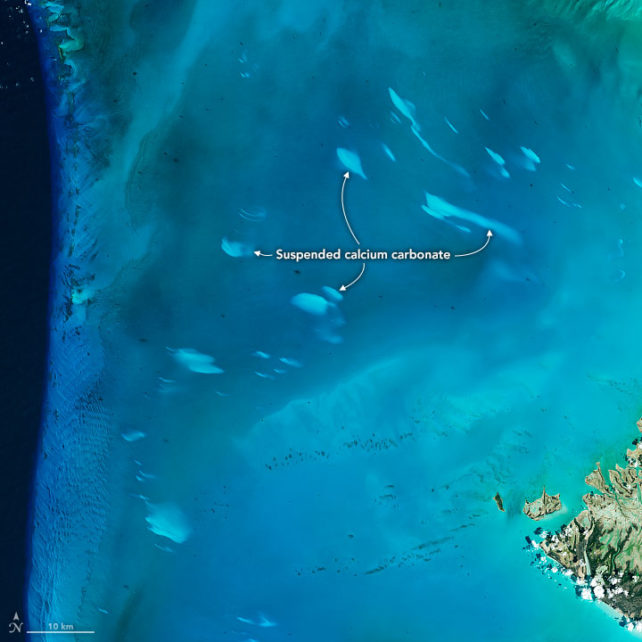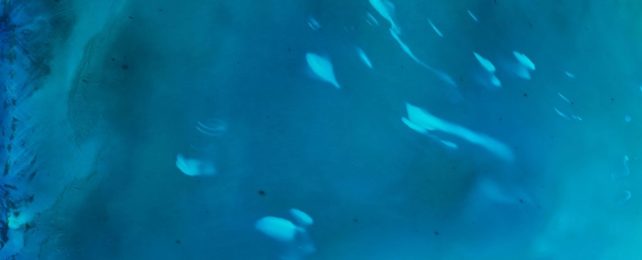The slice of ocean squeezed between Florida and the Bahamas is one of the most well-studied marine environments in the world, and yet it's also the epicenter of a lasting geological mystery.
Since at least the 1930s, scientists in the region have noticed strange, billowing white clouds appearing in the turquoise tranquility of the water's surface.
The curious phenomenon is called a 'whiting event', and scientists still don't understand why it occurs in the Bahamas.
It has become a sort of 'white whale' for researchers at the nearby University of South Florida (USF).

The perplexing patches of light-colored ocean are sometimes noticed in other oceans and lakes worldwide, but in the Bahamas, they pop up more often than usual.
Direct sampling of the cloudy waters suggest they contain high concentrations of carbonate-rich particles.
Much of the Bahama archipelago sits on a submerged platform of carbonate known as the Bahama Banks. Does this mean sediments are rising to the surface? Or could it be that blooms of phytoplankton are actually producing the suspended material?
No one knows the answers to those questions, but scientists at USF are determined to find out. They've used satellite images from NASA to show how whiting events ebb and flow in the Bahamas.
The team doesn't know if the trends they've identified are natural or human-caused, but what they do know is that from 2003 to 2020, the size of these whiting events seemed to correlate with the seasons.
The largest patches occurred from March to May and October to December. On average, the white patches were about 2.4 square kilometers a piece. On a day with clear skies, satellite images usually snapped about 24 of them, covering a total area of 32 square kilometers (12 square miles).
Between 2011 and 2015, however, the patches suddenly swelled in size, covering more than 200 square kilometers of the ocean at their peak (77 square miles). By 2019, however, the patches shrunk again, although they never got quite as small as they had previously been.
The findings suggest a 10-year cycle might be at play. But a cycle of what exactly?
"I wish I could tell you why we saw that peak in activity, but we're not there yet," says USF oceanographer Chuanmin Hu.
"We do see some interesting relationships between environmental conditions, such as the pH, the salinity of water, and the behavior of winds and currents, but we can't yet say what exact mechanical, biological, or chemical processes were responsible for that peak in activity."
More direct field experiments are needed, and not just in the Bahamas. Comparing whiting events in other regions could help scientists figure out what features they share in common.
USF researchers tested their model on whiting events in the Great Lakes with preliminary success, but now need to back up those patterns on the ground, or rather, in the water.
August 2 Satellite view of the Pyramid Lake Whiting event in its early stages pic.twitter.com/SoPltG1lG3
— Pyramid Lake Paiute Tribe (@plpt) August 10, 2020
Some studies, for instance, have shown that whiting events happen more in places with muddy sediments.
In addition, it could be that some ocean conditions favor the suspension of sediments and calcium carbonate in the water column. As mentioned before, recent satellite data suggests white patches in the Bahamas are more common in spring and winter, and this is when the Florida currents that run north to south switch.
Without more evidence, all of these theories will remain just that.
The study was published in Remote Sensing of Environment.
